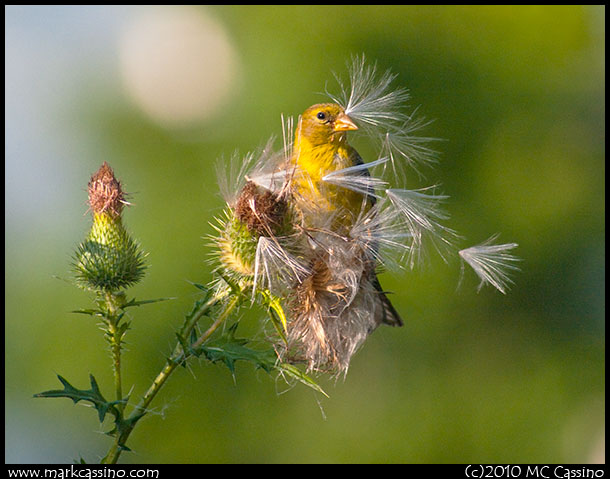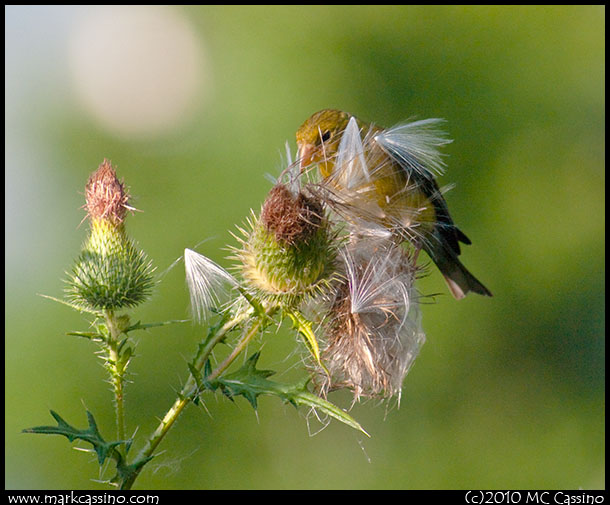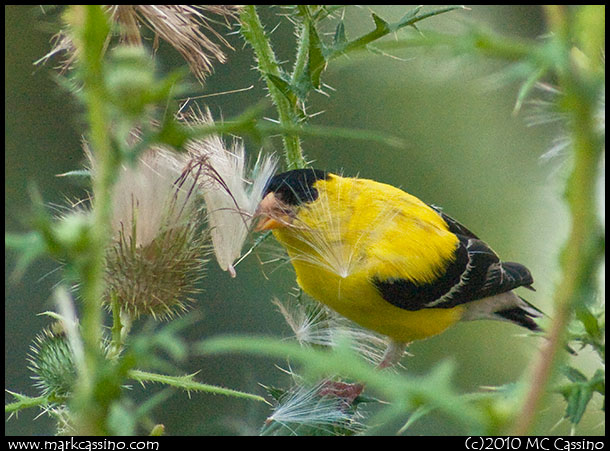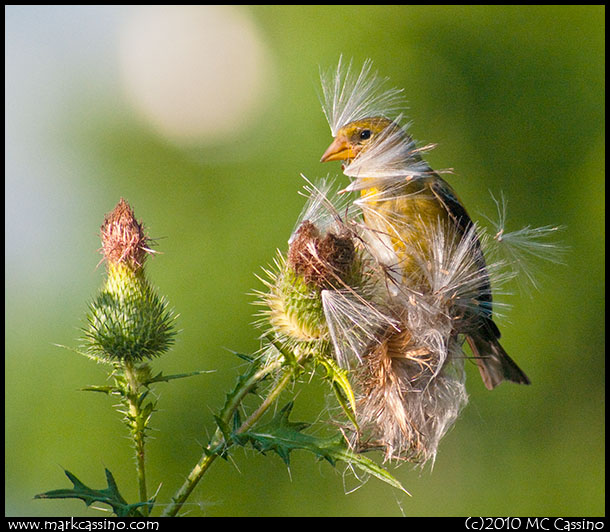Of Finches and Thistle

I live in the city and have a small urban yard. It’s not much for attracting wildlife, but it is sometimes surprising to see what can pass through this little space. Over the last few years I’ve been trying to cultivate wildflowers in a strip along the edge of the yard. The project has resulted in a mixture of domestic and wild plants, some native and many not.
Here we have phlox, grey coneflower, day lilies and queen of the prairie alongside peonies, tulips, and spearmint. Some tall grasses pop up here and there. Asters bloom in the spring and autumn, some white, some blue. Each year I mow a little less of the lawn and leave a few inches more to go wild. The grass grows high and in a few weeks the coneflower, asters or phlox appear and get started.

This year I stopped mowing back a bull thistle plant. The plant always managed to send out spiny leaves that were low enough to avoid the mower’s blade, but it was never able to send forth its flowering stems. After several years of being mowed back it finally got its chance to bloom, and it sent out an array of thorny stems and branches that soon bore lots of flower heads.
The flowers weren’t particularly attractive to my eye, but they brought in interesting visitors. I saw several swallowtail butterflies visiting the plant while it was in bloom, but as the first flowers faded a pair of goldfinches showed up regularly to eat the seeds and harvest the silk for their nest.

I first noticed this one day around noon. I had just gotten into my car and glanced over at the thistle to see a female goldfinch with a mouthful of downy thistle seeds. She looked like she had silky white whiskers. Over the next few weeks the pee-weep pee-weep became commonplace, as the pair would land on the thistle to feast on its seeds and gather the down.
In addition to letting the thistle grow, I stopped feeding the birds for the summer. The birdseed that had fallen from the feeders over the winter sprouted and started to grow. Early in the summer we had many stalks of wheat, that turned brown and died up by midsummer. Only after it was dry would the squirrels nip off the seed head and eat the wheat kernels. Lots of sunflowers also rose up, and these too where a favorite of the finches and other birds.

Looking at Stoke’s Guide to Bird Behavior, I see that the goldfinch nests and breeds rather later in the summer, and that nest building starts in July and runs through August. The timing of the bull thistle’s flowers and subsequent seed heads and down is perfect for the finches.
In early September I cut down the now dried up and dead thistle. The finches weren’t visiting it anymore, and the dried up stalks were pretty ugly. I put out a feeder filled with Niger thistle seed, and set the dried husk of the bull thistle onto the top of the compost pile, where the birds could still visit it if they needed any more down.
Next year, if a bull thistle shows up, I think I’ll let it grow.
